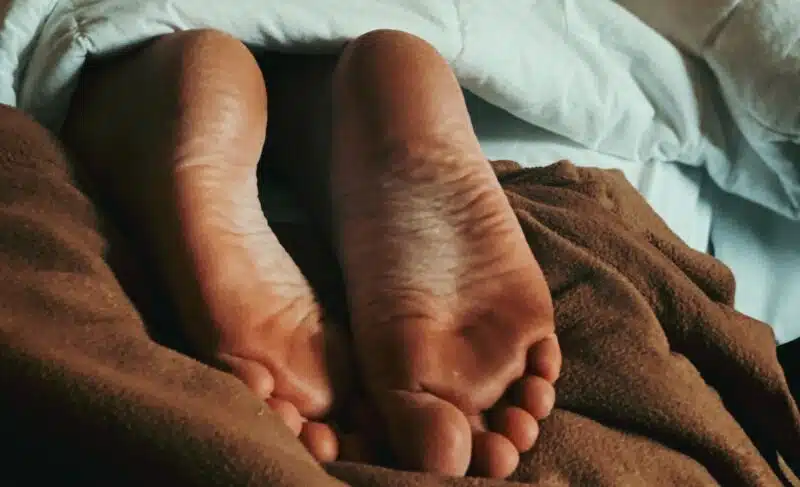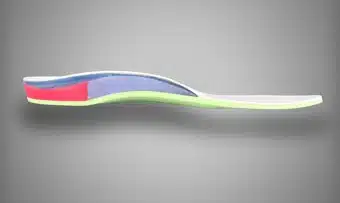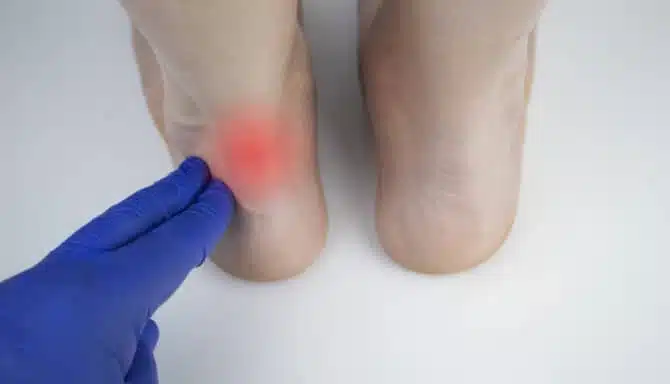Many people don’t know what goes into their custom orthotics – not just the materials, but the technology that creates a comfortable orthotic. In this post, learn about all the different accomodations and orthotic customizations available to make your feet happy!
What Are Orthotic Customizations and Accomodations
Additions and Accommodations are very common parts of custom orthotics. They are used if a normal over-the-counter insole just won’t cut it. For example, if a patient has a neuroma or a misaligned gait, an orthotic without custom support won’t have anywhere near the same effectiveness. Here is a list of the most common orthotic customizations and accommodations for custom orthotics.
Heel Modifications
Firstly we have heel modifications. These are some of the most common additions to keep your feet comfortable and supported:
- Cushion – Adds additional padding and shock absorption on the heel. Heel cushions cover the whole heel. Cushioning the heel is helpful for a variety of foot conditions, like plantar fasciitis and arthritis. It essentially reduces the strain and impact of your step.
- Lift – Heel lifts can balance out differences in leg height and to prevent overpronation or supination. They can also be used to help with Achillies tendonitis. They’re made of a harder material for balance.
- Hole – Heel holes are used to help with heel spurs. Cushioning can be added to increase comfort and distribute pressure in the heel.
- Seat – A Heel seat gives the patient more control if they overpronate. It’s designed to hold the fatty tissue under the calcaneus in place.

Metatarsal Modifications
These orthotic customizations are designed to take pressure off of your metatarsals (the ball of your foot). They are helpful for anyone experiencing foot pain at the ball of their foot just below the toes.
- 1st Ray Cutout – Helps to offload pressure off 1st metatarsal head (the big toe). This is used to help with bunions and arthritis.
- 2-4 Metatarsal Pad – This is a teardrop shaped pad that sits below the metatarsals. It takes some of the load off the metatarsals by offloading pressure at ball of foot and elevating the second, third, and fourth metatarsals.
- Metatarsal Bar – This is similar to 2-4 metatarsal pads, but has more surface area and offloads more pressure from the metatarsal heads. It can provide more stress relief in some cases.
- Neuroma Pad – This is a small pad that sits between metatarsals and spreads them apart. It is designed to correct the transverse arch and help with pain in the metatarsals. As the name suggests, it is can help people experiencing a Morton’s neuroma.
Arch Support

Moving on, we have arch support, which is important for everyone – regardless of whether you have a foot condition – but moreso for people who struggle with plantar fasciitis and arch pain.
Arch Pad – Additonal support on the arch for patients who need more arch support.
Fill – Arch fills make the orthotic more rigid. This is used to help the orthotic to support more weight. It can also be used to help somewhat with controlling the midtarsal joints.
Additional Accommodations
Finally, we have modifications that don’t really fit into the previous categories. These are all very common additions that are often put in orthotics:
Morton’s Extension – Extra length under 1st metatarsal to keep it rigid. It helps during the push off phase of gait and can be rigid if patient has hallux rigidus or limitus. It immobilizes and offsets pressure on the first met joint.
Reverse Morton’s – This increases the mobility of the first met joint. The pad sits under the 2nd to the 5th met head and ends before the first.
Dancer Pad – Offloads the ball of the foot. It works by taking weight off of the big toe joint and dispersing it.
Scaphoid Pad – This is used to help support the mid and back foot. Helps take pressure off the joints and bones in the arch.
While these are the most common accommodations found on orthotics, there are many more! To learn more about how orthotics can be modified and customized to suit your unique foot needs, check out this Website.
What Orthotic is Right For Me?
A licensed chiropodist can determine what orthotic customizations and features are best for you. The chiropodist would first do a biomechanical assessment and gait analysis. They’ll then diagnose your foot condition and make recommendations. Remember – orthotics are just one part of the equation when it comes to treating foot pain. While they can be beneficial for many common foot conditions, it’s recommended to also explore other treatment options first, like supportive footwear, exercises and stretches.
If your chiropodist recommends orthotics, they’ll discuss the different options and customizations available, and which ones will work best for your foot condition. They’ll also take into account your activities and the footwear you’d be wearing the orthotics with. The chiropodist will then take a 3D scan of your foot and send it off to the lab to make your orthotics. You would then see the chiropodist a few weeks later for a fitting appointment, at which time the chiropodist will check that the orthotics are constructed properly and working the way they should. If everything checks out, you can take them home! We also recommend coming back about 6 to 8 weeks after your fitting for a follow-up appointment to see if your orthotics are helping with your foot pain. If they aren’t, the chiropodist can modify the orthotics.










